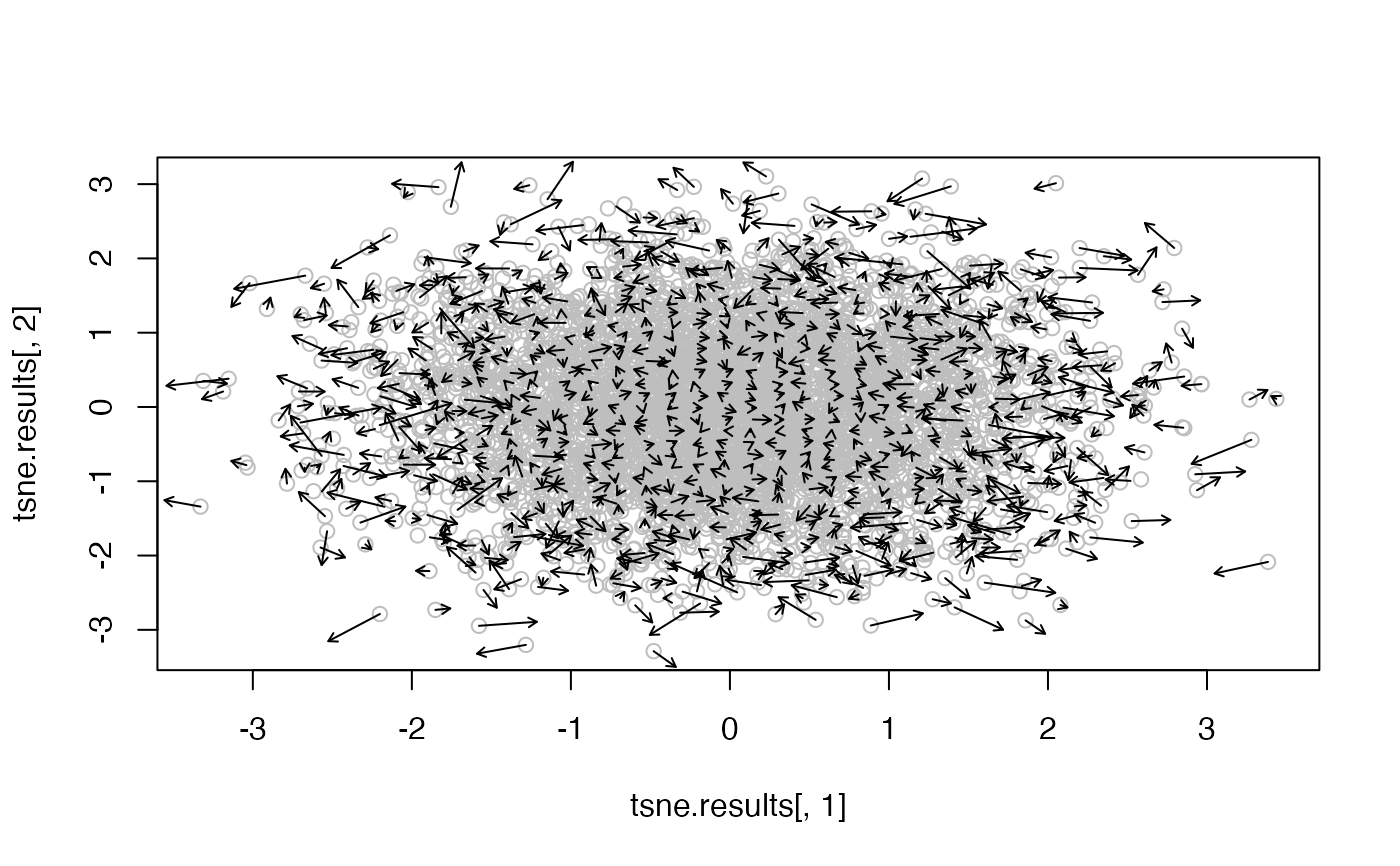Summarize the velocity vectors into a grid, usually for easy plotting.
Usage
gridVectors(x, embedded, ...)
# S4 method for class 'ANY'
gridVectors(
x,
embedded,
resolution = 40,
scale = TRUE,
as.data.frame = TRUE,
return.intermediates = FALSE
)
# S4 method for class 'SingleCellExperiment'
gridVectors(x, embedded, ..., use.dimred = 1)Arguments
- x
A numeric matrix of low-dimensional coordinates, e.g., after t-SNE. Alternatively, a SingleCellExperiment containing such coordinates in its
reducedDims.- embedded
A low-dimensional projection of the velocity vectors into the embedding of
x. This should be of the same dimensions asxand is typically produced byembedVelocity.- ...
For the generic, further arguments to pass to specific methods.
For the SingleCellExperiment method, further arguments to pass to the ANY method.
- resolution
Integer scalar specifying the resolution of the grid, in terms of the number of grid intervals along each axis.
- scale
Logical scalar indicating whether the averaged vectors should be scaled by the grid resolution.
- as.data.frame
Logical scalar indicating whether the output should be a data.frame. If
FALSE, a list of two matrices is returned.- return.intermediates
Logical scalar indicating whether intermediate objects should also be returned. This enforces
as.data.frame=FALSEand throws a warning if it isTRUE.- use.dimred
String or integer scalar specifying the reduced dimensions to retrieve from
x.
Value
If as.data.frame=FALSE, a list is returned containing start and end,
two numeric matrices with one row per non-empty block in the grid and one column per column in x.
start contains the mean location of all cells inside that block,
and end contains the endpoint after adding the (scaled) average of the block's cell's velocity vectors.
If as.data.frame=TRUE, a data.frame is returned with numeric columns of the same contents as the list above.
Column names are prefixed by start.* and end.*.
If return.intermediates=TRUE, a list is returned (irrespective of the value of as.data.frame)
that in addition to start and end also contains intermediate objects limits
(the ranges in x and y), delta (the grid intervals in x and y), categories (a
DataFrame with integer row and column indices for each cell that specify the grid field that it is
contained in), grp (numerical index of grid fields for each cell) and vec (velocity
vectors for non-empty grid fields).
Details
This partitions the bounding box of x into a grid with resolution units in each dimension.
The locations and vectors of all cells in each block are averaged to obtain a representative of that block.
This is most obviously useful for visualization to avoid overplotting of velocity vectors.
If scale=TRUE, per-block vectors are scaled so that the median vector length is comparable to the spacing between blocks.
This improves visualization when the scales of x and embedded are not immediately comparable.
See also
embedVelocity, to generate embedded.

